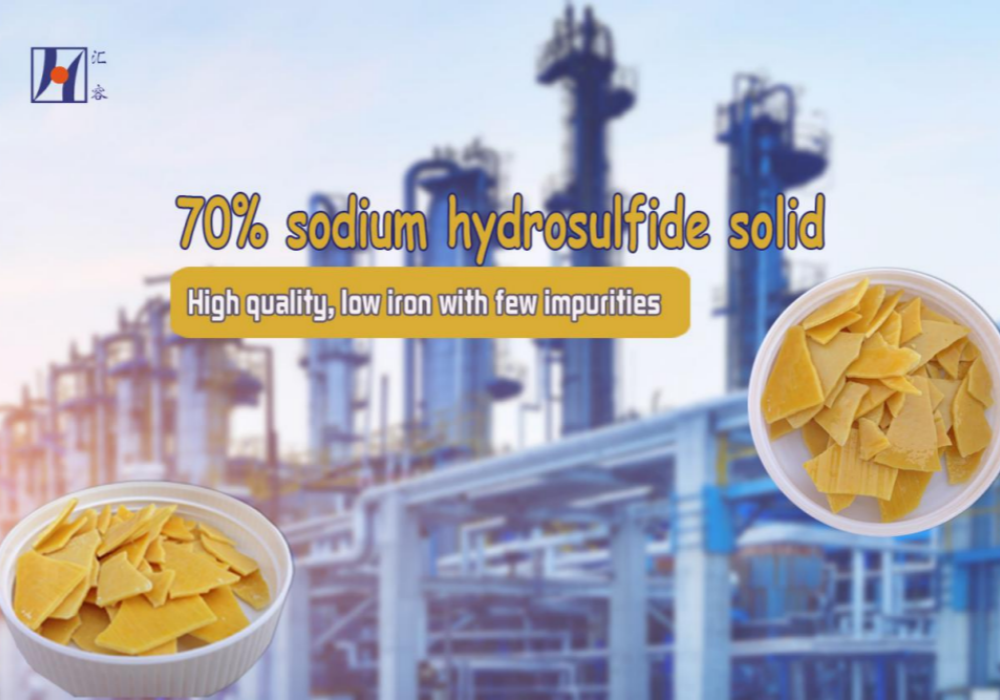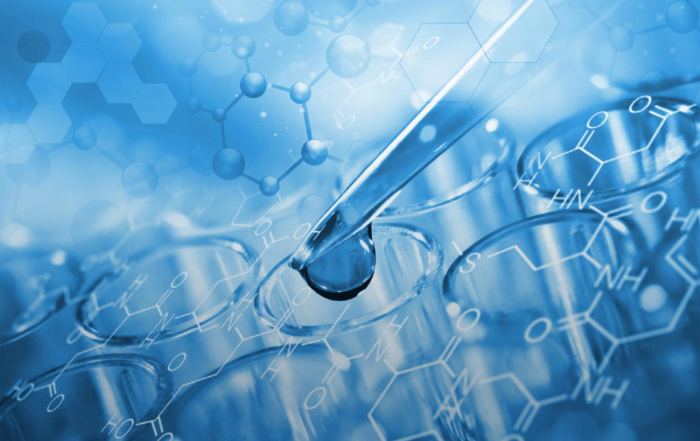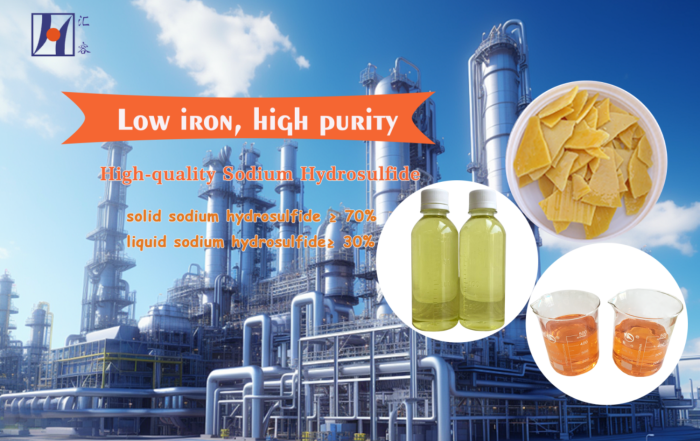Sodium hydrosulfide (NaHS) is an inorganic compound, also known as sodium hydrosulfide or sodium sulfhydrate. Its chemical formula is NaHS, which is a white to colorless powder with a hydrogen sulfide odor and cubic crystals. Industrial products are generally solutions, orange or yellow. Sodium hydrosulfide is easily soluble in water and alcohol, has strong reducing properties, and can react with many substances.
Sodium hydrosulfide is widely used in many fields. In the dye industry, it is used as an auxiliary agent for synthesizing organic intermediates and preparing sulphur dyes. In the leather industry, sodium hydrosulfide is used for dehairing and tanning of raw hides. In addition, in the fertilizer industry, it is used to remove monomeric sulfur from activated carbon desulfurizers. Sodium hydrosulfide is also widely used in copper ore dressing and sulfite dyeing in the production of artificial fibers.
It should be noted that sodium hydrosulfide is a highly toxic substance that is irritating to the eyes, skin and respiratory tract. During use, appropriate protective equipment such as chemical protective glasses, protective gloves and protective clothing should be worn, and good ventilation should be ensured in the workplace. If sodium hydrosulfide is accidentally exposed or an accident occurs, appropriate emergency measures should be taken immediately and medical treatment should be sought in time.
1. Precautions For The Use Of Sodium Hydrosulfide
01 Wear Protective Equipment:
When operating sodium hydrosulfide, personal protective equipment such as chemical protective glasses, protective gloves and protective clothing should be worn to avoid skin and eye contact with the substance. .
02 Pay Attention To Ventilation:
Sodium hydrosulfide releases toxic hydrogen sulfide gas, so good ventilation conditions should be ensured when using it. When used in a laboratory or other enclosed space, the gas should be removed in time to avoid its accumulation and cause danger.
03 Avoid Contact With Other Substances:
Sodium hydrosulfide is a strong reducing agent that can react with many substances. Therefore, when using sodium hydrosulfide, avoid contact with acids, oxidants and flammable substances to avoid causing dangerous chemical reactions.
04 Prevent Splashing And Dusting:
When handling sodium hydrosulfide, care should be taken to avoid splashing and dusting. If splashing occurs, rinse immediately with plenty of clean water and dispose of the splashed material in time. At the same time, avoid sodium hydrosulfide from absorbing moisture and producing dust to avoid harm caused by inhalation or contact.
05 Avoid Inhalation And Swallowing:
The hydrogen sulfide gas released by sodium hydrosulfide is irritating and toxic. If too much gas is inhaled, it may cause damage to the respiratory system and health. Therefore, when using sodium hydrosulfide, avoid inhaling the gas produced and be careful not to swallow the solution.
06 Disposal Of Waste:
After using sodium hydrosulfide, it should be properly handled. It can be neutralized into a neutral solution and then safely disposed of. At the same time, the container of the waste liquid also needs to be properly handled to avoid pollution and harm.
2. Causes Of Sodium Hydrosulfide Agglomeration And How To Avoid it
Sodium hydrosulfide agglomeration is mainly caused by its hygroscopicity. When sodium hydrosulfide is exposed to humid air, it absorbs moisture in the air, causing agglomeration. To avoid sodium hydrosulfide agglomeration, the following measures can be taken:
01. Store In A Dry Environment:
Store sodium hydrosulfide in a dry, well-ventilated place and avoid exposure to humid air. Ensuring that the relative humidity of the storage environment is low will help reduce the hygroscopicity of sodium hydrosulfide.
02. Sealed Packaging:
Place sodium hydrosulfide in a sealed container to ensure that it is not exposed to moisture in the air. Choose appropriate sealing materials, such as glass bottles, plastic bottles, etc., and ensure that the lid of the container is tightly closed.
03. Avoid Temperature Changes:
Try to avoid exposing sodium hydrosulfide to an environment with large temperature changes. Temperature changes may cause moisture in sodium hydrosulfide to condense, which in turn causes agglomeration. Therefore, the temperature of the storage environment should be kept stable.
04. Regular Inspection:
Check the status of sodium hydrosulfide regularly, and take timely measures if agglomeration is found. You can try to gently tap the container or use appropriate tools to break the agglomerates to restore them to powder form.
3. How To Distinguish The Quality Of Solid Sodium Hydrosulfide
01 Appearance
High-quality solid sodium hydrosulfide usually presents white or slightly light yellow crystals, with a clean surface and no obvious impurities or uneven particles. If the product is dark in color, has impurities or uneven particles, it may be a sign of poor quality.
02 Purity
Purity is a key factor in measuring the quality of solid sodium hydrosulfide. High-quality products should have high purity and low impurity content. Its purity can be determined by chemical analysis methods, such as gravimetric method, titration method, etc.
03 Solubility
Solid sodium hydrosulfide should have good solubility. When dissolved in an appropriate amount of water, it should be able to dissolve quickly and form a clear solution. If the dissolution rate is slow or the solution is turbid, it may be a manifestation of poor quality.
04 Stability
High-quality solid sodium hydrosulfide should have good stability and is not easy to absorb moisture and agglomerate. During storage and transportation, it should be able to maintain its original physical and chemical properties unchanged.
05 Supplier Reputation
Choosing a supplier with a good reputation is also an important step in ensuring the quality of solid sodium hydrosulfide. You can evaluate the supplier’s credibility by checking its qualifications, performance and user reviews.





